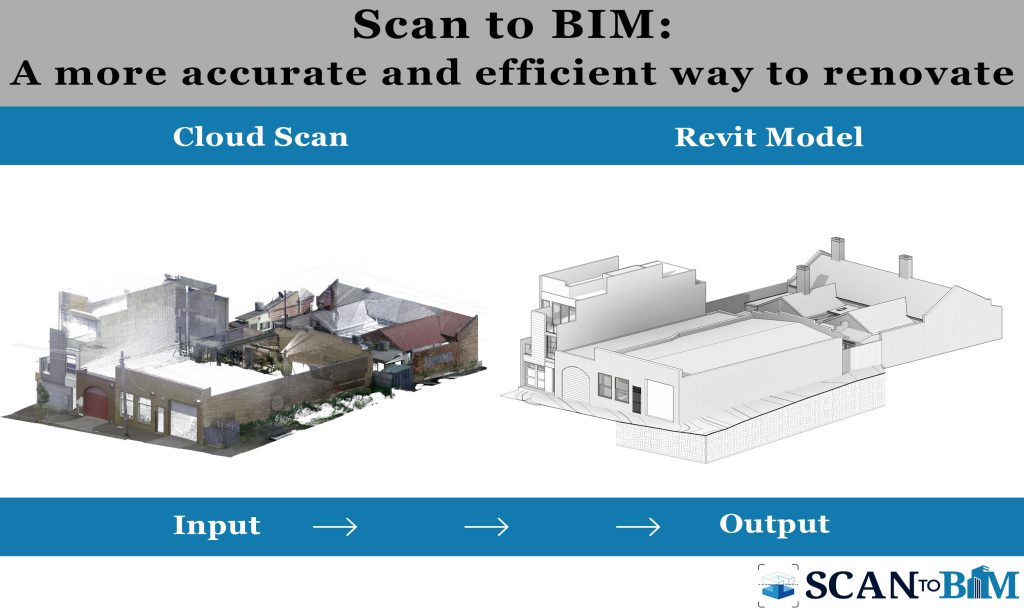
Introduction
The use of cutting-edge technology has drastically altered the building sector in the past few years. Scan to BIM (Building Information Modelling) technology represents a single notable invention that has entirely altered the remodelling process. Among architects, engineers, and contractors, Scan to BIM and Scan to CAD Services are turning into indispensable tools that help them to improve and expedite the remodelling workflow. This article highlights the potential for Scan to BIM technology to completely alter the manner in which we approach rehabilitation projects.
Understanding Scan to Bim technology
Through the use of 3D laser scanning technologies, point clouds of data may be transformed towards thorough Building Information Models. By creating a complete digital model of the current building’s physical makeup, this method makes accurate measurements and evaluations possible. The technique retrieves crucial data from point clouds, including measurements, materials, and spatial correlations, by integrating sophisticated algorithms. This computerized representation serves as the basis for redesign planning, clash identification, as well as design adjustments.
Streamlining Renovation workflow with Scan to BIM services
- Accurate Documentation:-
By capturing a building’s current state, scan to BIM technology makes it possible to provide comprehensive as-built documentation. Implementing educated decisions throughout the remodelling procedure is made possible by such data and the specialist expertise of experts. In comparison to conventional rehabilitation techniques, projects using Scan to BIM services saw a median 34% reduction in the duration of the project length, according to a report by the National Institute of Building Sciences. - Clash Detection and Visualisation:-
Clashes amongst newly created and existing parts may be discovered promptly through the integration of Scan to BIM models with CAD software. Early identification minimizes reworking, cuts down on interruptions to the project, as well as boosts stakeholder collaboration. According to the National Institute of Building Sciences, Scan to BIM technology helped reduce costs during the refurbishment process by an average of 31%. Improved coordination, collision detection, as well as the capacity to prevent reworking are all responsible for this drop. - Design optimization:-
It is possible to scan to BIM services thanks to the precise as-built information they provide. This saves time and dollars by enabling architects and engineers to find any flaws in the design and implement the required corrections while construction starts. According to a Dodge Data & Analytics survey, using Scan to BIM technology enhanced cooperation and communication amongst project stakeholders for 67% of construction professionals. This improved communication results in superior judgment as well as reduced disputes.
Scan to CAD services: Complementing the Renovation Process
Scan to CAD services are equally as important for the restoration process as Scan to BIM services. Transforming point cloud data into precise 2D or 3D CAD models is known as scan to CAD. Specialists may use this kind of equipment to retrieve geometric information gathered through laser checks, including floor plans, elevations, and sections. These CAD models improve the remodeling workflow by acting as useful resources for design alterations plus documentation.
Advancements in Scan to BIM Technology
- Artificial Intelligence and Machine Learning:
The use of artificial intelligence (AI) and machine learning (ML) algorithms constitutes a significant advancement in Scan to BIM Services. These developments facilitate autonomous object detection, and categorization, as well as modelling, improving the scanning and modelling operations’ rapidity and precision. A thorough BIM model may be created utilizing point cloud data by using AI-powered algorithms which are able to recognize typical architectural components like partitions, openings, and doors. - Mobile scanning solutions:
This has been improved by the development of lightweight and grasped laser scanners. These tools lessen the necessity for immobile scanners by enabling rapid and precise data gathering on-site. Mobile scanning technologies provide prompt feedback and real-time data visualization, simplifying quick modifications as well as guaranteeing the accuracy of scan data.
Future Implications and Conclusion
The restoration process might be completely changed by Scan to BIM services which provide previously unheard-of precision, efficiency, and cooperation. We may anticipate more developments as this technology’s popularity increases, in the manner of the incorporation of machine learning and artificial intelligence to improve automation and decision-making skills. The building industry may open fresh opportunities for refurbishment by implementing Scan to BIM and Scan to CAD services, which are going to enhance project results, save costs, and increase customer satisfaction.
In conclusion, these scanned technologies have changed the game for the remodelling sector. Professionals might speed up the refurbishment process, minimize mistakes, and deliver projects more quickly by utilizing precise in its entirety data, clash detection, and design optimization capabilities. Adopting cutting-edge technology including Scan to BIM is crucial for remaining competitive in the contemporary era of restoration projects as the building industry keeps on evolving.